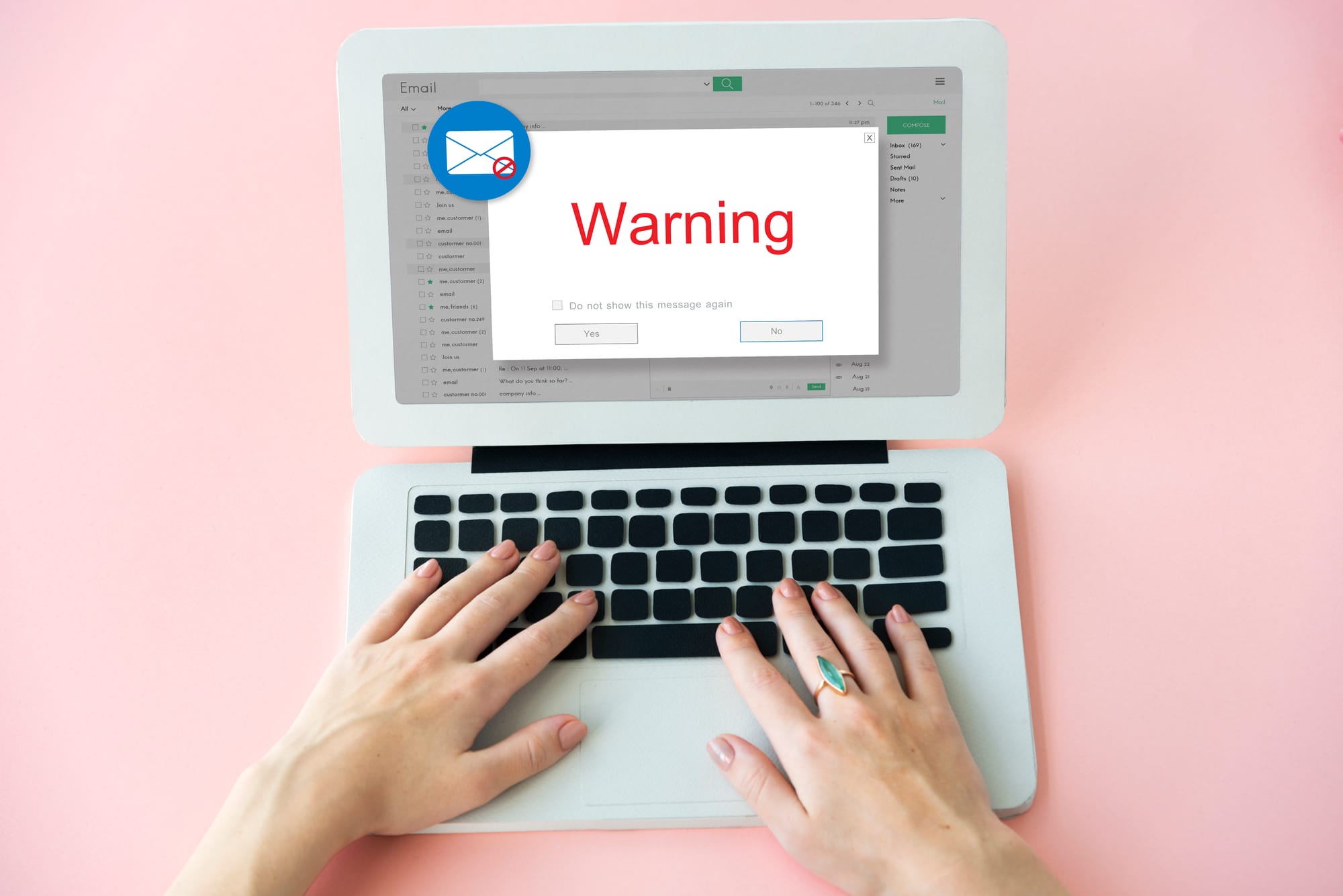Newsletter Mistakes That Are Killing Your Engagement - and How to Fix Them Today!

Newsletters are a powerful way to connect with your audience, share updates, and build a loyal following. But like any form of communication, there’s a right way and a wrong way to do it. Mistakes—whether it’s sending poorly formatted emails, forgetting to optimize for mobile, or skipping over data insights—can hold your newsletter back from reaching its full potential.
The good news? Most of these mistakes are entirely fixable! In this guide, we’ll walk you through 10 common newsletter mistakes, how to identify and resolve them, and provide real-life examples you can relate to. By avoiding these pitfalls, you’ll create newsletters that truly resonate with your readers and drive results.
Plus, with tools like LetterSub, promoting and amplifying your newsletter becomes even easier. Let’s dive in!
1. Weak or Vague Subject Lines

What It Is
Your subject line is the first impression your newsletter makes. A weak or unclear subject line fails to grab attention or convey why the email is worth opening. Common problems include being too generic, overly long, or lacking in personality.
This can lead to lower open rates and fewer people engaging with your content. To learn more about Subject Line Mistakes That Could Hurt Your Open Rates, click here.
How to Fix It
To craft a compelling subject line, make it specific, short, and intriguing. Include a clear benefit for the reader, such as solving a problem or sharing exciting news. Using personalization—like the subscriber’s name or a reference to their preferences—can also significantly boost engagement.
Avoid spammy phrases like “Buy Now!!!” which can land your email in the spam folder. A/B testing different subject lines can help you understand what resonates with your audience.
Example
Mistake: “Monthly Newsletter Issue #15” (Boring and generic).
Fix: “🔥 5 Simple Hacks to Save Time Today” (Specific, action-oriented, and engaging).
2. Overloading Your Newsletter with Content

What It Is
An overloaded newsletter crams too much information into a single email. While it’s tempting to share every update, announcement, or promotion, this can overwhelm your readers.
A cluttered newsletter with dense paragraphs, excessive links, or too many images distracts your audience and reduces engagement. When readers can’t easily identify the main message, they are likely to skip or even unsubscribe. To learn more about optimizing your newsletter content in your email newsletter, click here.
How to Fix It
Focus on one primary goal for each newsletter—whether it’s promoting a product, sharing a blog post, or announcing an event. Use a clean layout with plenty of white space to make your content visually appealing and easy to read.
Break up text into short, scannable sections with clear headings and bullet points. Include only essential links and visuals that directly support your goal. A good rule of thumb is: if a piece of content doesn’t align with your newsletter’s main objective, leave it out.
Example
Mistake: Sending a newsletter with five different promotions, three blog links, and a long paragraph about your company’s mission.
Fix: Sending a focused newsletter with a headline like “Check Out Our Summer Sale,” one clear CTA leading to your website, and a brief intro with a link to learn more.
3. Failing to Optimize for Mobile

What It Is
With more than 50% of emails being opened on mobile devices, an unoptimized newsletter can look clunky or unreadable on smaller screens. This includes misaligned images, tiny fonts, or links that are hard to click. Learn here to learn more about best practices to follow for mobile email marketing.
How to Fix It
Choose a responsive design template that adjusts to any screen size. Use large, legible fonts (14–16px minimum for body text) and clear, tappable buttons for CTAs. Avoid stacking too many images or links in a single section, as this can cause clutter on smaller screens. Test your email on both desktop and mobile devices before hitting “send.”
Example
Mistake: A newsletter with small, overlapping text and unclickable buttons on a smartphone.
Fix: A sleek, mobile-responsive email that adapts seamlessly to different screen sizes.
4. Missing a Clear Call-to-Action (CTA)

What It Is
Your CTA is the bridge between your newsletter and your desired action—whether that’s visiting a blog, buying a product, or signing up for an event. Without a strong CTA, readers may enjoy your content but won’t know what to do next.
How to Fix It
Include one or two CTAs in every newsletter, making them easy to spot and actionable. Use direct, compelling language like “Download Your Free Guide,” “Start Your Free Trial,” or “Shop the Sale.”
Position your CTAs in strategic places, such as after key points or at the end of your email. CTA buttons should be bold, colorful, and clickable.
Example
Mistake: A newsletter with no clickable links or instructions for the reader.
Fix: A bold button that says, “Read the Full Blog Post” below the opening summary.
5. Irregular Sending Schedule

What It Is
Inconsistency in sending newsletters—whether it’s skipping weeks or bombarding your audience with emails—creates confusion and erodes trust. Your subscribers won’t know when to expect your emails, leading to lower engagement or even unsubscribes. Inconsistent schedules also signal a lack of professionalism and can result in your newsletter being overlooked. Here is an additional reading for best practices for increasing newsletter and email engagement.
How to Fix It
Create a content calendar and stick to a consistent schedule that aligns with your audience’s preferences. Whether you send emails weekly, bi-weekly, or monthly, ensure that your subscribers know when to expect them.
Analyze your email open rates to determine the best day and time to send your newsletters. Email marketing platforms often provide analytics tools to help you track and optimize your schedule.
Example
Mistake: Sending three emails in one week and then not sending any for a month.
Fix: Setting up a schedule to send your newsletter every Thursday at 9 AM, ensuring consistency and building anticipation among your readers.
6. Failing to Track and Analyze Performance

What It Is
Sending newsletters without tracking their performance is like driving blindfolded. Without data, you won’t know what’s working or what needs improvement.
Metrics like open rates, click-through rates, and unsubscribes provide valuable insights into how your audience is interacting with your content. Ignoring these analytics can lead to repeated mistakes and stagnant results.
How to Fix It
Use the analytics tools provided by your email marketing platform to monitor the performance of each newsletter. Track key metrics like open rates (how many people opened your email), click-through rates (how many clicked on your links), and conversion rates (how many took the desired action).
Use this data to identify trends and optimize future emails. For example, if a subject line drives high open rates, use similar strategies in the future.
Example
Mistake: Sending newsletters without checking if subscribers are opening or engaging with them.
Fix: Reviewing analytics to discover that newsletters sent on Wednesdays have higher open rates, and scheduling future emails accordingly.
7. Not Segmenting Your Email List

What It Is
Segmenting your email list means dividing your subscribers into smaller groups based on specific criteria, such as demographics, behavior, or interests. A common mistake is treating your entire audience as one homogenous group and sending the same newsletter to everyone.
This approach ignores the diverse preferences of your subscribers, resulting in irrelevant content that leads to lower engagement, higher unsubscribe rates, and wasted marketing efforts. Read here to learn more about optimizing content in your email newsletter.
How to Fix It
To segment your list, start by gathering data about your subscribers through signup forms, surveys, or tracking their interactions with your previous newsletters. Criteria such as age, location, purchase history, or industry are great starting points. Use email marketing platforms like Mailchimp, ConvertKit, or HubSpot that offer advanced segmentation tools.
Personalize your content for each group—send product recommendations based on past purchases, location-specific offers, or content relevant to their interests. Regularly review and update your segments to keep them accurate and relevant.
Example
Mistake: Sending a promotional email about winter clothing to your entire list, including subscribers in tropical regions.
Fix: Segment your list by location and send the winter clothing email to subscribers in colder climates while sending a summer collection email to those in warmer regions.
8. Poor Design and Layout

What It Is
A poorly designed newsletter often feels cluttered, unprofessional, and overwhelming to readers. This mistake occurs when there’s no clear structure, inconsistent fonts or colors, and an excessive amount of images or text crammed into one email. Readers are left confused, unable to identify the primary message, and may stop engaging with your newsletters altogether. A lack of white space, confusing navigation, and poor readability can also make your newsletter appear amateurish.
A disorganized design distracts readers and reduces their likelihood of taking action. It can make your newsletter feel like an afterthought rather than a carefully crafted piece of communication that respects their time. In an inbox flooded with emails, visual appeal is one of the first things that grabs attention. Without it, your content may never stand a chance.
How to Fix It
Start by adopting a clean, simple layout with a clear hierarchy. Use headings, subheadings, and sections to guide readers through the content. Stick to a consistent color scheme and font choices that align with your brand’s identity. Avoid cramming too much content into a single email—focus on one core message and make the rest easy to skim.
Use plenty of white space to give your content room to breathe, and make sure your call-to-action (CTA) buttons are bold, visible, and strategically placed. A single-column layout works best for mobile optimization and ensures readability across devices. Consider using pre-designed email templates available in platforms like Mailchimp or HubSpot to get started. Test your designs before sending to ensure they display correctly on both desktop and mobile devices.
Example
Mistake: Your newsletter features five different fonts, an array of clashing colors, and text crammed into multiple sections with no clear purpose. Readers feel overwhelmed and unsubscribe.
Fix: Your redesigned newsletter uses a sleek single-column layout with one font style and a cohesive color scheme that matches your brand. Headings guide readers through each section, and a prominent “Shop Now” CTA button directs them to your latest product launch. This clean and structured approach improves engagement and encourages action.
9. Ignoring Accessibility

What It Is
Accessibility in newsletters ensures that everyone, including people with disabilities, can read and engage with your content. Ignoring accessibility means that your newsletter may exclude people with visual, hearing, cognitive, or motor impairments.
This can lead to a poor reader experience and even damage your reputation if your audience feels excluded. Examples of inaccessible newsletters include using unreadable font colors, missing alt text for images, and neglecting proper text hierarchy.
How to Fix It
To make your newsletters accessible, choose high-contrast colors between your text and background for readability. Use alt text for all images so visually impaired readers using screen readers can understand your content.
Avoid using only color to convey important information (e.g., “click the red button”); instead, add descriptive labels. Structure your email with proper headings, clear navigation, and concise language to help readers easily follow your content. Test your newsletters using accessibility tools like WAVE or the accessibility features in your email platform.
Example
Mistake: A newsletter with light gray text on a white background and no alt text for images.
Fix: A newsletter that uses black text on a white background, includes alt text like “Photo of a happy customer holding our product,” and has a clear, well-structured layout for navigation.
10. Sending Emails Without Permission

What It Is
Sending newsletters to people who haven’t explicitly subscribed is a common but serious mistake. This practice, known as spamming, violates trust, damages your brand’s reputation, and may even breach email marketing laws like GDPR or CAN-SPAM. Unsolicited emails often end up in the spam folder, and recipients are unlikely to engage with or trust your brand in the future.
How to Fix It
Always build your email list ethically by using opt-in forms where people willingly provide their email addresses. Clearly explain what they’ll get by subscribing (e.g., updates, discounts, or exclusive content).
Include a double opt-in process where subscribers confirm their email addresses to prevent adding uninterested recipients. Add a clear unsubscribe link to your newsletters to allow people to opt out at any time, keeping your list clean and compliant.
Example
Mistake: Purchasing an email list and sending a promotional newsletter to 10,000 random contacts.
Fix: Using a signup form on your website that says, “Sign up for weekly tips on mastering your craft,” and sending a welcome email to new subscribers.

Newsletters are an incredibly powerful way to connect with your audience, build relationships, and achieve your goals. But even the best intentions can fall flat if common mistakes—like poor design, inconsistent scheduling, or irrelevant content—get in the way. Addressing these issues transforms your newsletter into a valuable resource that your subscribers look forward to receiving.
By fixing these 10 mistakes, you’ll improve not only the visual appeal of your emails but also their effectiveness in engaging readers and driving results. From clear layouts to focused messaging, the small changes you make today can lead to big rewards tomorrow.
But why stop there? Amplify your reach and impact with LetterSub, the ultimate platform for promoting your newsletters. Let’s connect you to new readers, grow your audience, and make your newsletters a standout success.
👉 Start promoting your newsletters on LetterSub now and watch your engagement soar! Together, we’ll make sure every email you send makes a difference.